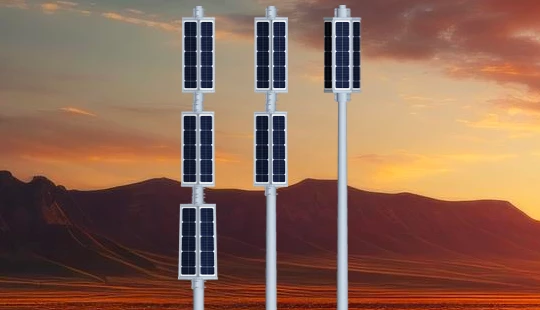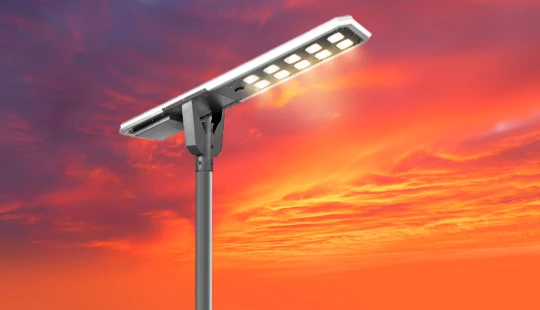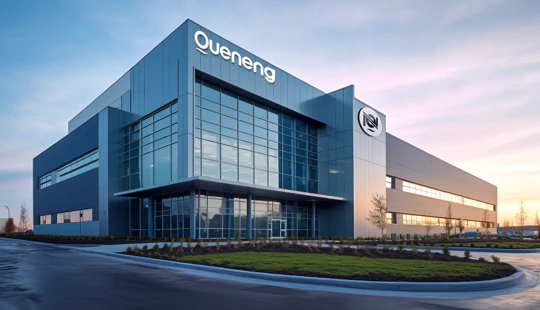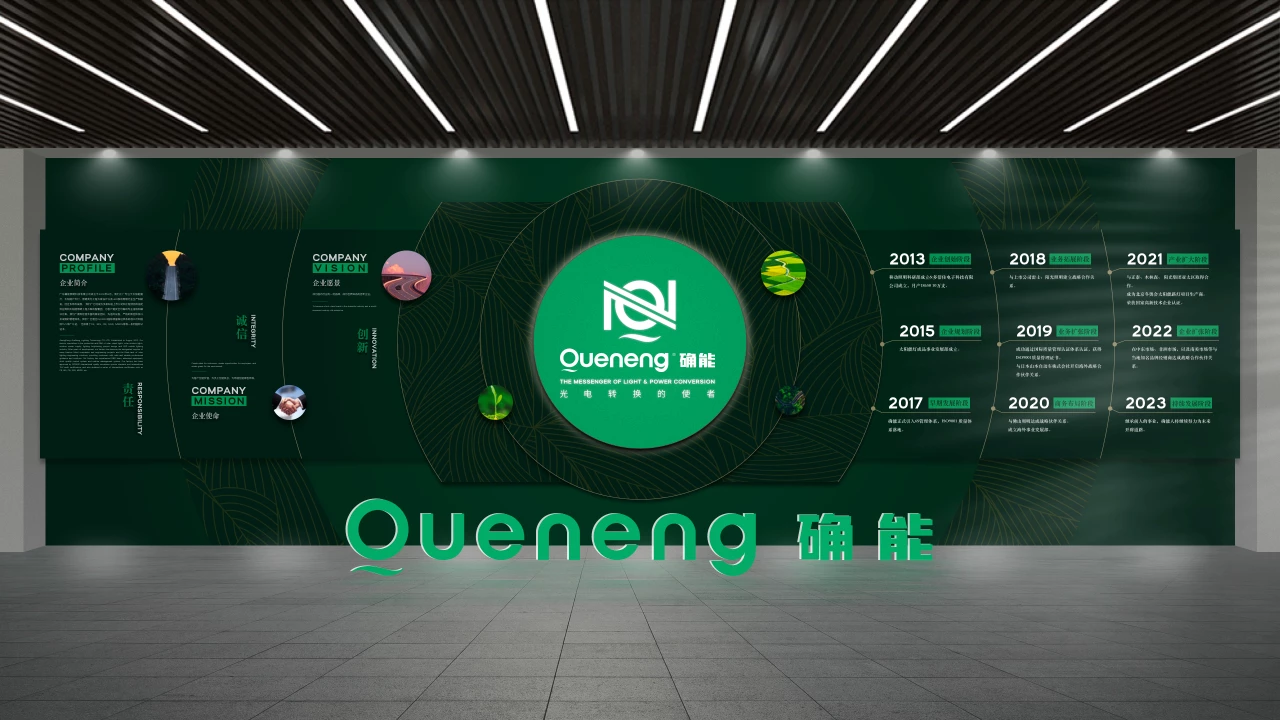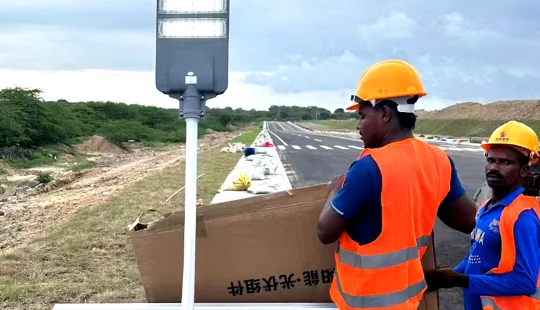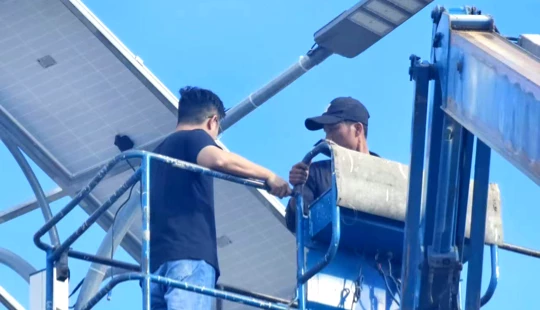all in one solar street light | Queneng Guide
Understanding All-in-One Solar Street Light Networks
All-in-one solar street lights offer a convenient and efficient way to illuminate streets, pathways, and public areas. The integration of solar panel, battery, LED lamp, and controller into a single unit simplifies installation and reduces cabling costs. But when you scale up and network these lights, new questions arise. Let's address the top 5 most frequently asked questions:
1. How does a networked all-in-one solar street light system work?
Networked all-in-one solar street lights communicate wirelessly, typically using technologies like Zigbee, LoRaWAN, or cellular (4G/5G). Each light acts as a node in the network, allowing central control and monitoring. The central control system allows users to remotely monitor battery status, light output, and system performance. It also enables functionalities like dimming schedules, adaptive lighting based on ambient conditions, and fault detection. Data collected from the lights can be used to optimize energy consumption and proactively address maintenance needs.
2. What are the benefits of networking solar street lights?
The advantages are numerous:
* **Remote Monitoring & Control:** Real-time insights into system health and performance, with the ability to adjust settings remotely.
* **Energy Optimization:** Schedule dimming, adjust brightness based on occupancy, and optimize charging cycles for maximum efficiency.
* **Predictive Maintenance:** Identify potential issues early, reducing downtime and extending the lifespan of the lights.
* **Enhanced Security:** Integrate with surveillance systems or trigger alarms based on pre-defined events.
* **Cost Savings:** Reduced maintenance costs due to remote diagnostics and optimized energy usage. Lower energy bills by dynamically adjusting lighting levels.
* **Centralized Control:** Manage all lights from a single platform, improving operational efficiency.
3. What are the key considerations for choosing a network technology?
Selecting the right network technology is crucial for a reliable and effective system. Consider these factors:
* **Range:** The distance between lights and the central control unit. LoRaWAN offers long range, while Zigbee is suitable for shorter distances.
* **Bandwidth:** The amount of data transmitted. Consider the complexity of the data being sent (e.g., real-time video vs. simple status updates).
* **Power Consumption:** The energy required by the communication module. This impacts the overall energy balance of the solar light.
* **Security:** The level of encryption and authentication used to protect the network from unauthorized access.
* **Cost:** The cost of the communication modules, network infrastructure, and ongoing data charges (if applicable).
* **Scalability:** The ability to easily add or remove lights from the network as needed.
4. What are the typical maintenance requirements for a networked system?
While networked systems offer remote monitoring, some maintenance is still required:
* **Panel Cleaning:** Regularly clean the solar panels to ensure optimal energy absorption.
* **Battery Replacement:** Batteries have a limited lifespan and will need replacement every few years. Remote monitoring can help predict end-of-life.
* **Component Inspection:** Periodically inspect the lights for any signs of damage or wear.
* **Software Updates:** Keep the central control system and light firmware up-to-date for optimal performance and security.
* **Network Maintenance:** Ensure the network infrastructure is functioning properly and address any connectivity issues.
5. How much does a networked all-in-one solar street light system cost?
The cost varies depending on several factors:
* **Light Specifications:** Power output, battery capacity, and LED quality.
* **Network Technology:** Different technologies have different module and infrastructure costs.
* **Central Control System:** The features and complexity of the software platform.
* **Installation Costs:** Labour and equipment required for installation.
* **Scale of the Project:** Volume discounts may be available for larger projects.
While the initial investment may be higher than traditional streetlights, the long-term savings on energy and maintenance often result in a lower total cost of ownership. It's essential to obtain quotes from reputable suppliers and consider the payback period when evaluating the cost of a networked all-in-one solar street light system. Contact Queneng for a custom quote based on your specific needs.

Have more questions about our products or services?
The latest hot news you might like

Discover how solar panels power street lights, exploring the technology behind solar energy conversion, storage systems, and how solar-powered street lights are revolutionizing urban and rural lighting solutions.

Learn how AC Solar Hybrid Street Lights work, their advantages, disadvantages, system behavior in low-sunlight conditions, and why hybrid technology is ideal for regions with unstable sunlight.

Municipalities around the world are increasingly adopting solar-powered streetlights as part of their urban development strategies. Rising energy costs, the need for sustainable infrastructure, and government green initiatives are driving cities to switch from traditional street lighting to advanced LED solar streetlights.
Queneng Lighting provides municipalities with cost-effective, energy-efficient, and durable solar lighting solutions, ensuring safe and sustainable public spaces.
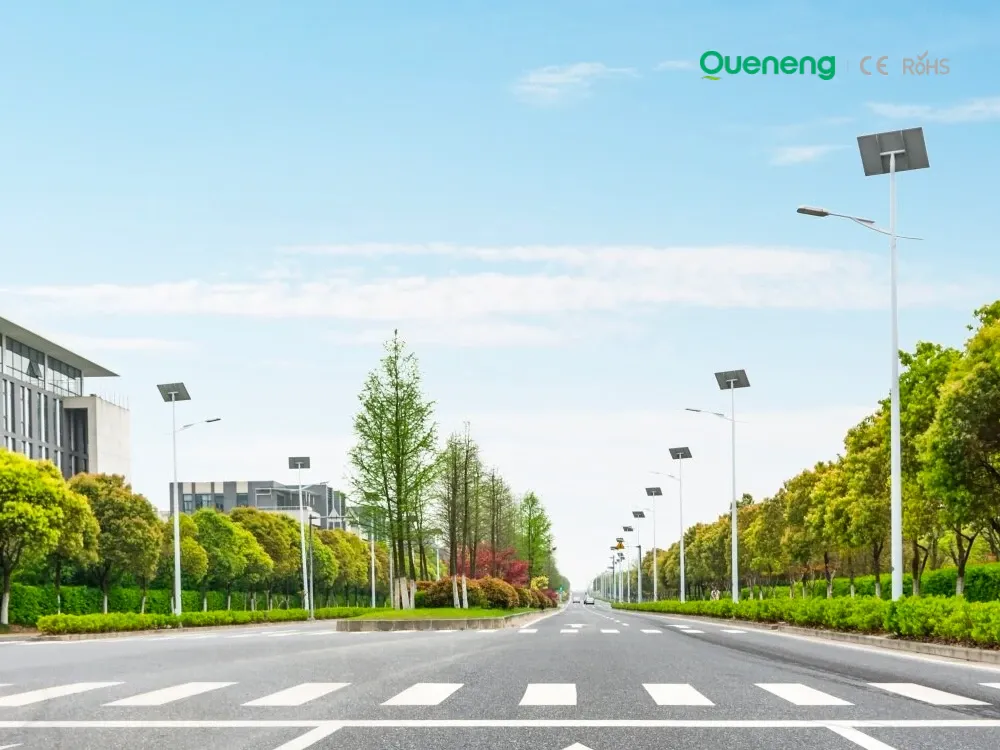
In recent years, the purchase of solar streetlights for municipalities has become a growing trend across the globe. Local governments are under pressure to reduce public expenditure, promote green energy, and create safer communities. Solar streetlights provide a reliable, cost-effective, and sustainable solution that meets these needs. Queneng Lighting, as a leading solar street lighting manufacturer, has supported multiple municipal projects worldwide with customized and energy-efficient solutions.
FAQ
Battery and Analysis
What is a portable battery?
The portable battery family includes primary batteries and rechargeable batteries (secondary batteries). Button batteries belong to a special group of them
What is a battery explosion? How to prevent battery explosion?
1) No overcharging or short circuit;
2) Use better charging equipment for charging;
3) The battery vents must always be kept open;
4) Pay attention to heat dissipation when using the battery;
5) It is prohibited to mix different types, old and new batteries
What are the main causes of rechargeable battery swelling?
2) The battery has no protection function and the cell expands;
3) The charger has poor performance and excessive charging current causes the battery to swell;
4) The battery is continuously overcharged by high rate and large current;
5) The battery is forced to over-discharge;
6) Issues with the design of the battery itself.
Schools and Educational Institutions
What is the warranty for the solar lights?
We offer a 5-year warranty on our solar lighting systems, covering parts and defects.
Remote Areas Rural Development
What funding options are available for rural solar lighting projects?
We offer flexible financing options, including installment plans and partnerships with NGOs or government programs.
Commercial and Industrial Parks
How do solar lights improve security in industrial parks?
Solar lights provide consistent and bright lighting, deterring unauthorized access and improving surveillance.


Queneng's Luzhou Solar Street Light provides sustainable, energy-efficient outdoor LED lighting. Powered by solar energy, it's a cost-effective and eco-friendly solution for illuminating streets and pathways. A reliable and durable LED solar street light.

Queneng’s Solar Street Lights are designed to provide reliable, energy-efficient lighting for streets, parks, and other outdoor spaces.

Queneng's Luxian Reliable Solar Street Light offers energy-saving LED lighting for outdoor use. This durable, solar-powered street light provides reliable illumination, reducing energy costs and environmental impact. A perfect solution for sustainable outdoor lighting.

The Solar Street Light offers an energy-efficient, eco-friendly solution for illuminating outdoor spaces.

Illuminate your outdoor spaces with the Solar Street Light, a cutting-edge solution combining advanced solar technology and energy-saving LED lighting.
If you would like more information about Queneng solar lighting solutions, please send us a message by filling out the form below. Our professional team will get back to you within 24 hours!
Rest assured that your privacy is important to us, and all information provided will be handled with the utmost confidentiality.
Schedule a Meeting

Book a date and time that is convenient for you and conduct the session in advance.
Have more questions about our products or services?

